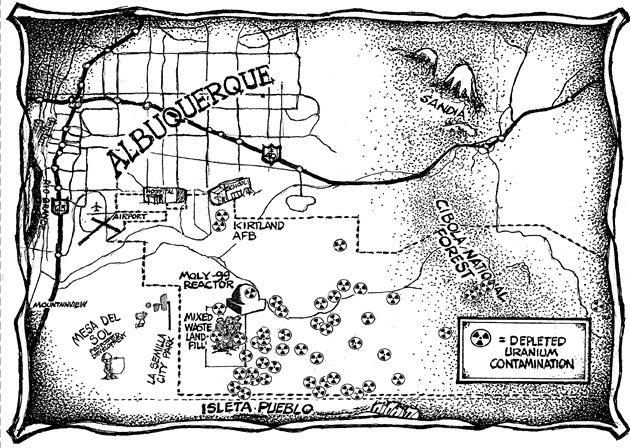
Carolina Peace Resource Center
Carolina Peace Resource Center is one of 39 environmental and peace organizations that won a landmark lawsuit against the U.S Department of Energy for failure to follow-through on adequate environmental cleanup during its 50+ years of nuclear weapons research, testing, and production. Part of this settlement was the establishment of the MTA Fund (Citizens’ Monitoring and Technical Assessment Fund), which provided $6.25 million for tribes and non-profit organizations to assess and conduct independent technical and scientific studies regarding the multitude of technical, ecological, and health issues surrounding the nation’s nuclear weapons complex.
Clark University was chosen by the non-profit peace and environmental groups as the conservator of these reports to ensure they remain available to the public in perpetuity. The unconventional election of university as conservator is an innovative example, particularly within the era of Web 1.0, of higher education as protector and provider of information through wide dissemination.
The research and reports available in this series were conducted by the Carolina Peace Resource Center with their allocated portion of the MTA fund.
If you have any questions or concerns please contact us at digitalrepository@clarku.edu.
-

Re-Analysis of "Plutonium in Autopsy Tissue": A Case/Control Examination of Nuclear Weapons Sites and Civilian Lung Burden
Carolina Peace Resource Center and Rita A. Fellers
This research uses advanced statistical techniques to re-analyse the plutonium burden in lung tissue data from “Plutonium in Autopsy Tissue: A Revision and Updating of Data Reported in LA-4875” by McInroy et al. (1979).1 The use of a general linear model has produced new preliminary findings whose potential was not apparent in the findings of the earlier work. Regions surveyed included Los Alamos National Laboratory (NM), Nevada Test Site (NV), Rocky Flats Plant (CO), and Savannah River Site (SC). This model specified a gamma distribution and linked an exponential function to the dependent variable, plutonium burden in lung, controlling for age, gender, year at death, and location near or downwind from a nuclear weapons facility (or not). Communities downwind of all nuclear weapons facilities showed a significantly higher plutonium lung burden than control communities.
When aggregated, communities close to or downwind from nuclear weapons facilities (cases) experienced potentially as much as 5.8 times the average plutonium lung burden as communities distant from those facilities (controls), all other variables being controlled for. Cases outnumbered controls by 468 to 212, a factor of 2.2. Women showed a 38% higher overall plutonium lung burden than men across the study span of 1959 to 1976, but this could be partly due to the smaller proportion of women in the study, and the fact that case group membership and pre-test ban death years dominate the female subgroup to a greater extent than the male. Both the 5.8 case/control differential and the 38% differential are highly significant at <0.0001 and 0.0018, respectively. Due to gaps in the data, the absolute values of these factors are less precise than desired, but their high probabilities indicate that the true differences between the case/control and male/female subgroups are extremely unlikely to be insignificant. Although communities distant from weapons facilities bore distinctly lower impacts from airborne plutonium exposure, all Americans were at risk for inhaling plutonium. Compared with communities close to weapons testing field laboratories, communities close to weapons manufacturing facilities experienced at least as great a risk of exposure to airborne plutonium. After 1967, the beneficial effect of the Limited Nuclear Test Ban Treaty is visible in the lung statistics, as the yearly coefficients fall from high double digits to the low single digits, and remain there through 1976.
Of 901 subjects, 680 lung samples were used in this analysis. Of those, 199 samples (100 cases, 99 controls) failed to produce counts detectable by the alpha spectrometry equipment of the time. The true values of these observations fell between 0.00 and 0.017 decays/min, and were recoded to 0.0035.
This document contains two supplementary files, a "Map of Autopsies and Weapons Sites" and "Flowchart - Denominator Derivation of Analysis Dataset Plutonium in Autopsy Tissue Data Re-Analysis".
This research was completed money allocated during Round 5 of the Citizens’ Monitoring and Technical Assessment Fund (MTA Fund). Clark University was named conservator of these works.
If you have any questions or concerns please contact us at digitalrepository@clarku.edu


